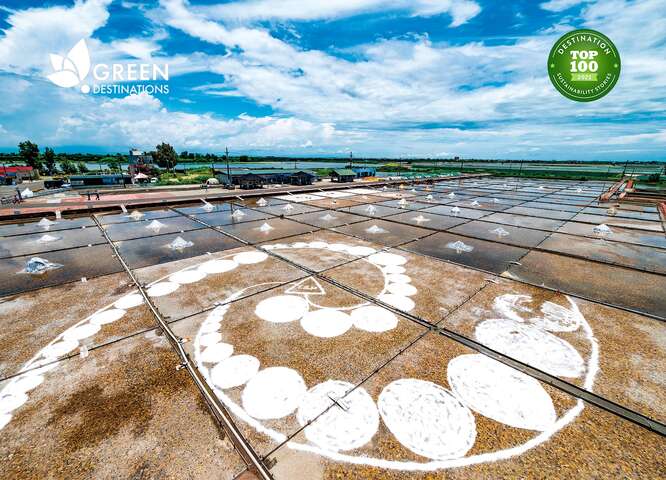Jingzijiao Wapan Salt Fields Introduction
Jingzai Jiao Tile Salt Field is the first salt field in Beimen and the oldest existing tile salt field site, originally established during the Qing Dynasty period as the Seadong Salt Field. It was relocated here in 1818 and has not been moved since, making it the oldest operational salt field in Taiwan, with a history of over 200 years. Historical records indicate that Chen Yonghua, an advisor and military officer under the Zheng regime, believed that the indigenous salt production techniques were not yet mature, resulting in bitter-tasting salt. He then reformed the salt-making methods by constructing platforms by the sea, laying broken tiles on them, and directing water into salt pools, allowing the sun to crystallize the salt on the tiles, thus advancing the artificial salt production industry. The tile salt field, paved with tiles approximately 6 millimeters thick, presents a beautiful mosaic-like art, embodying the spirit of its salt production culture. The salt field has been restored to preserve the unique salt-making landscape of Jingzai Jiao along the coast of Yonghua Village, Beimen. As the sun sets, the evening glow reflects in the salt fields, making this location a popular spot for photographers to capture the beauty of sunsets. It has now become the most distinctive tourist salt field within the Yunlin-Chiayi-Tainan Coastal National Scenic Area. Jingzai Jiao Tile Salt Field allows visitors to reminisce about shared memories of local residents, and tourists can experience the joy of traditional salt-making, carrying, and harvesting, while gaining a deeper understanding of Taiwan's history and geography of salt production, making it a suitable deep travel destination for family outings.








































